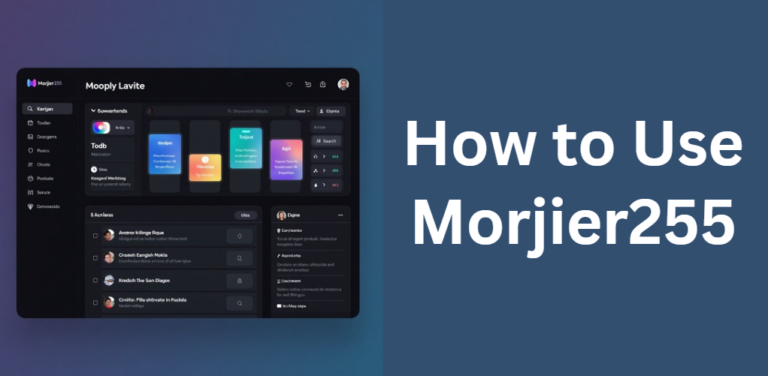Unlocking Editorial Success with the Power of Posts TimesHealthMag
In the evolving world of digital health publishing, posts timeshealthmag have carved a space of trust and consistency among readers. Whether it’s nutritional insight, mental wellness support, or updates from the medical field, these posts set the tone for expert‑backed health communication online.
This guide explores how to create meaningful, optimized, and well‑structured content that resonates with readers and stands out in search rankings.
Audience Insight and Competitive Landscape
Understanding who you’re writing for is the first step to dominating in health content. Posts timeshealthmag typically attract readers between the ages of 25 and 55—people seeking clarity, simplicity, and credibility in wellness advice. These audiences appreciate science-backed insights but need them presented in practical, digestible language.
Competitor analysis reveals that while many health platforms cover similar themes, few excel at combining educational value with emotional relevance. This leaves a gap for deeply informative yet reader-friendly content that feels both personal and professional.
Defining Your Content Pillars
A solid content strategy starts with well-defined pillars. Posts timeshealthmag typically align around four central categories:
- Nutrition & Diet: Exploring healthy eating habits, food science, dietary patterns, and cultural food practices.
- Fitness & Exercise: Delivering guidance on strength training, cardio, mobility routines, and recovery strategies.
- Mental Wellness: Addressing stress management, mindfulness, and emotional resilience through expert advice.
- Medical News & Research: Simplifying complex studies and sharing breakthroughs that affect everyday life.
Each of these areas offers endless depth and opportunities for unique storytelling.
Anatomy of a High-Performing Post
Compelling Headlines and Metadata
Strong titles drive clicks. Instead of sensationalism, posts timeshealthmag focus on clarity, benefit, and curiosity. Examples include:
- “7 Proven Ways to Boost Your Gut Health This Week”
- “What New Sleep Research Means for Your Morning Routine”
Pairing such titles with concise meta descriptions improves click-through rates. For example:
| Element | Example |
|---|---|
| SEO Title | Best Foods to Fight Inflammation Backed by Science |
| Meta Description | Learn how these anti-inflammatory foods help your body recover and thrive naturally. |
Engaging Introductions
A great post doesn’t wait to deliver value. Start with a relatable problem, a surprising fact, or a short story. Use emotional triggers like curiosity, urgency, or inspiration to keep the reader engaged.
Readable Body Structure
Breaking content into small, logical parts improves retention. Use H2s and H3s to build visual hierarchy, and avoid long paragraphs. Integrate:
- Lists for clarity (e.g., benefits, symptoms, tips)
- Tables for comparison or data visualization
- Call-out boxes for quotes or actionable advice
Multimedia Integration
Adding visuals—like infographics, recipe walkthroughs, or step-by-step fitness GIFs—can increase time on page. Every image should have descriptive alt-text and serve a purpose, whether it’s to explain, motivate, or inspire.
Keyword Strategy and On-Page SEO
A high-ranking post naturally uses posts timeshealthmag without overstuffing. It should appear in the title, meta description, introductory paragraph, and within subheadings where relevant.
To build relevance further, include semantically related terms like:
- health lifestyle blog
- science-based wellness
- nutrition facts explained
- fitness goal tracking
Internal linking is key—guide users to other relevant posts timeshealthmag to reduce bounce rates and deepen engagement.
Editorial Workflow and Quality Control
An effective health blog needs process, not just creativity. Here’s a table outlining an editorial pipeline that supports both SEO and trustworthiness:
| Stage | Action | Owner |
|---|---|---|
| Topic Selection | Keyword research, reader demand analysis | Content Strategist |
| Drafting | Expert-written content with citations | Health Writer |
| Review & Edits | Proofreading, fact-checking, readability scoring | Editor |
| SEO Optimization | Keyword placement, alt-text, internal linking | SEO Specialist |
| Publishing | Format layout, CMS entry, scheduling | Web Manager |
This ensures every piece of content is not just accurate but polished, discoverable, and on-brand.
Promotion and Community Building
A published post needs distribution. To maximize reach, promote posts timeshealthmag through:
- Branded social snippets on Facebook, Twitter, and LinkedIn
- Instagram carousel tips with health visuals
- Email newsletters featuring post highlights
- User polls and feedback forms under posts
Community engagement transforms one-time visitors into loyal subscribers. Featuring reader questions or comments in future posts also encourages interaction.
Performance Measurement and Optimization
Knowing what’s working is essential. Key metrics include:
- Organic Traffic – measured through Google Search Console
- Engagement Time – shows how long readers stay on a page
- Share Rate – reflects how helpful or relatable the content is
Test different versions of headlines and call-to-actions to boost conversions. Update evergreen posts timeshealthmag regularly to reflect new research and maintain relevance.
Monetization and Partnership Opportunities
Once traffic grows, monetization becomes viable. You can introduce:
- Sponsored articles by health brands
- Affiliate links for recommended products (disclosed transparently)
- Free PDF guides in exchange for emails
- Webinars on trending health topics
Always maintain editorial independence to retain audience trust.
Case Studies: Winning Health Content Models
Look at what has already succeeded. A detailed nutrition guide titled “Foods That Heal Your Gut” generated significant traffic because of its strong SEO structure, clear visuals, and direct applicability.
Another example is a 30-day fitness challenge that saw a spike in shares due to its downloadable tracker, simple explanations, and motivational tone.
These case studies prove that structure, quality, and relatability drive impact.
Emerging Trends and Future-Proofing Content
To stay ahead, content creators must innovate. Posts timeshealthmag are now experimenting with:
- AI personalization to suggest posts based on user behavior
- Interactive quizzes to tailor fitness plans or meal suggestions
- Podcast summaries of top articles
- Video content transcribed for accessibility and SEO
Adapting to these changes helps extend reach across different audience preferences.
Frequently Asked Questions
What is the optimal word count for a single health post to balance depth and readability?
While there’s no one-size-fits-all answer, aiming for 1,200–1,800 words allows you to explore a topic thoroughly without overwhelming readers. This range supports in-depth explanations, data examples, and actionable tips, while still fitting the attention span of most online audiences.
How do I verify that medical or scientific claims meet industry compliance?
Collaborating with credentialed healthcare professionals or certified experts during the drafting and review stages ensures accuracy. Always reference peer‑reviewed journals and official guidelines, log your sources internally, and run content past a fact‑checking checklist before publication.
Which readability level should I target for maximum engagement?
Most health readers respond best to a reading level equivalent to grades 8–10, where complex ideas are broken down into clear, conversational language. Tools like the Flesch‑Kincaid score can help you gauge and adjust your prose for broader accessibility.
What content management features most effectively support SEO for wellness blogs?
Look for a CMS that offers easy metadata editing, automatic XML sitemap generation, responsive design templates, and plugin or built‑in support for schema markup. These features streamline on‑page optimization, ensuring each post is discoverable by search engines.
How often should existing posts be audited and refreshed?
Scheduling a quarterly review helps you catch outdated statistics, broken links, or new research developments. During each audit, update key facts, refine headlines for current trends, and add new internal links to maintain relevance and SEO value.
Conclusion
Posts timeshealthmag offer more than information—they offer authority, community, and transformation.
By understanding the audience, structuring content for both engagement and SEO, and consistently adapting to trends, health creators can unlock lasting visibility and reader loyalty. Strategic planning, paired with quality writing and expert insights, remains the winning formula for creating standout content in the wellness space.
Read more
Ultimate Guide to the fashion junkee shirt theyenvyus
Harnessing rovzizqintiz for Next‑Gen Innovation | 2025 Strategic Blueprint
Unveiling ndrynk: A Revolutionary Fusion of Wellness Innovation and Musical Brilliance






